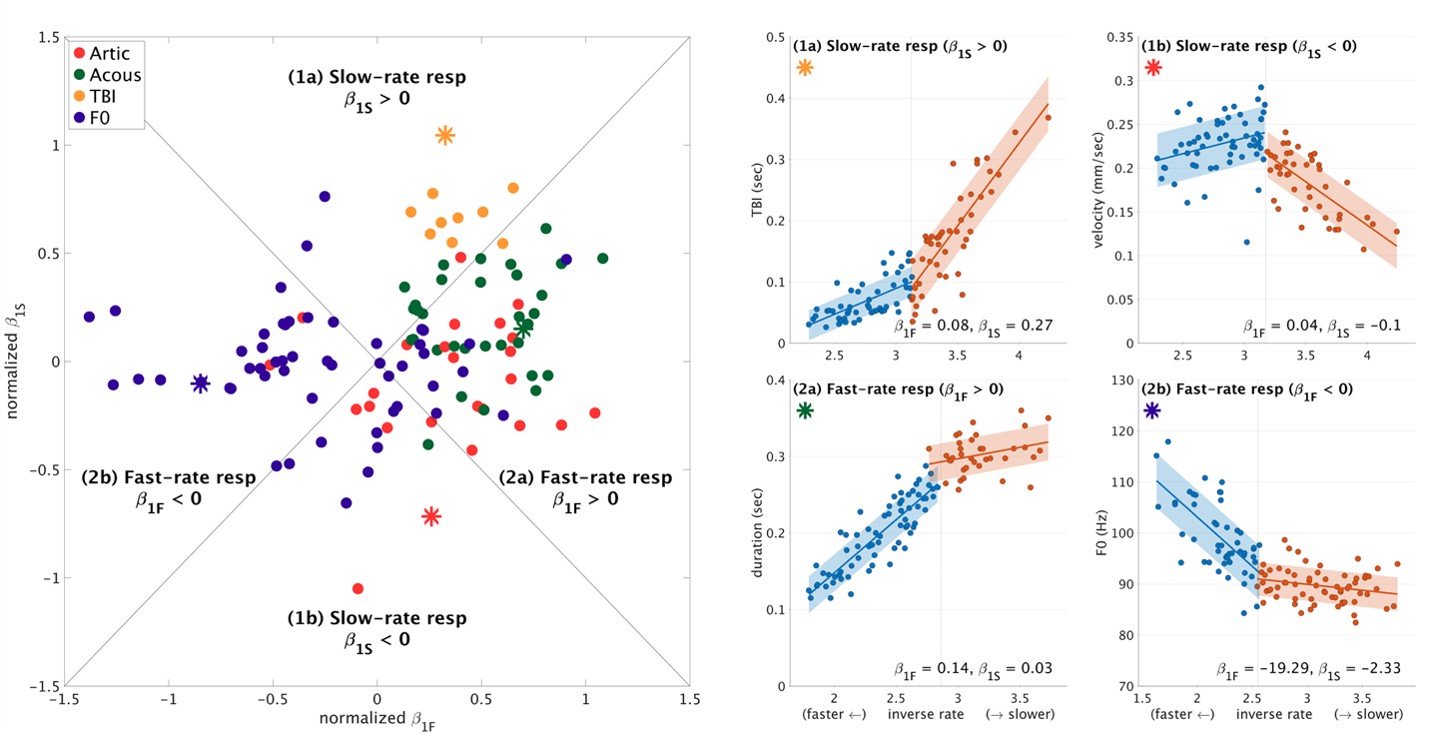News

Lingzi Zhuang Selected for Wu Scholarship
Lingzi Zhuang, doctoral student in linguistics, was one of the students selected to receive a Hsien Wu and Daisy Yen Wu Scholarship.
These awards provide recipients with funds to help with any aspect of doctoral study, from research expenses to personal living expenses. The Wu Scholarship was established by Daisy Yen Wu in memory of Hsien Wu (parents of the late Cornell professor Ray Wu) to recognize graduate students for their academic ability, performance, character, and financial need.
3rd May 2021
Brynhildur Stefansdottir and Francesco Burroni present paper at FiNo 2021
Brynhildur Stefansdottir and Francesco Burroni presented a paper titled: "Articulatory hallmarks of Icelandic voiced fricative lenition and their implications for phonological theory" at Fonologi i Norden - Phonology in the Nordic Countries - (FiNo 2021), held virtually Feb 26, 2021.
Paper Abstract:
In the phonological literature, Icelandic voiced fricatives have been reported to reduce and even delete, especially in intervocalic position (Helgason 1993). To date, phonological descriptions have not been supplemented by experimental work. To fill this gap, we present an acoustic and articulatory study lenition.
We put forth the following hypotheses.
*First, we expect Icelandic lenition to manifest the hallmarks of gradient gestural undershoot, and articulatory data may show that constriction targets are reached ¬– to varying degrees – even when no acoustic output is present. However, some fricative may be fully deleted, suggesting a categorical component to lenition.
*Second, we hypothesize that lenition rate, but not occurrence, may be modulated by speech “style”: lenition occurs in both clear and casual speech, but it is more pervasive in the latter speech style.
*Third, we hypothesize that lenition interacts with stress, with lenition being less common after a stressed syllable.
Method:
Acoustic and articulatory (EMA) data were collected from 4 native Icelandic speakers (3F; 1M). Target segments appeared in two vowel environments and three stress conditions: (1) following a stress initial syllable (long/heavy vowel), (2) following an unstressed syllable (short/light vowel), and (3) following a syllable with secondary stress. 19 unique items were produced (Table 1).
Target words were produced in a carrier phrase. Participants alternated blocks where they were instructed to speak either clearly/formally or casually/ informally. Each speaker completed a total of 24 blocks. Data were hand-segmented in PRAAT.
Kinematic landmarking was algorithmically accomplished using the acoustic segmentation as initial landmarks to identify relevant articulatory events. [ɣ] constriction degree was estimated using the tongue body (TB) sensor. [ð] constriction degree was estimated using tongue tip sensor (TT). Maximum velocity associated with TB and TT gesture was extracted together with preceding minimum, following maximum, gestural onset and target.
Results:
Preliminary results show a continuum of targets, compatible with a lenition continuum. Both style and stress/syllable position affect lenition, albeit this is not evident for all speakers. Some speakers showing a near categorical difference between clear and casual speech, with lenition in casual speech and no lenition in clear speech. Comparing syllables after primary stress vs the other conditions, we found that the same stimulus in the absence of primary stress has shorter TB movement and lower maximum TB constriction. We also observed a difference between clear and casual speech with both a lower TB maximum constriction and smaller TB movement in casual speech in both conditions.
Conclusion:
The results show that Icelandic voiced fricative lenition is best conceptualized as gradient target undershoot. However, in some cases, lenition has been lexicalized as categorical gesture deletion. Lenition interacts with speech style and stress. We discuss how these gradient and categorical aspects of Icelandic lenition may be modelled within the framework of Articulatory Phonology (AP, Browman & Goldstein 1992). In so doing, we also touch upon the consequences of our findings for recent work on the nature of lenition as an articulatory effort or “intensity-uniterruption” driven process (Katz 2016 and references therein).
References:
Árnason, K. (2011) The Phonology of Icelandic and Faroese. Oxford: Oxford University Press. Browman, C. P., & Goldstein, L. (1992).
Articulatory phonology: An overview. Phonetica, 49(3-4), 155-180. Katz, J. (2016).
Lenition, perception and neutralisation. Phonology, 33(1), 43-85 Helgason, P. (1993)
On Coarticulation and Connected Speech Processes in Icelandic. Reykjavík: Málvísindastofnun Háskóla Íslands
27th February 2021
Draga Zec presents a paper at INTERSLAVIC 2021
Draga Zec presented a paper titled on “Tone and stress in loanword phonology as minimal constraint re-ranking" at Interslavic: Internationalisms in Slavic as a window into the architecture of grammar (INTERSLAVIC 2021), University of Graz, held virtually February 24-26, 2021
26th February 2021

Seung-Eun Kim presents poster at the Acoustical Society of American conference
PhD candidate Seung-Eun Kim presented a poster titled: "Phonetic evidence for categorical differences in prosodic structure" at the 179th meeting of the Acoustical Society of America, held Dec 7-11, 2020
Her poster described experimental phonetic evidence for categorically distinct prosodic structures associated with two types of relative clauses in English.
Most of the phonetic measures showed a significant difference between the two syntactic structures, which provides some evidence for distinct prosodic categories. However, a non-linearity analyses in both structures showed weak evidence for categorical variation in prosodic structure.
27th January 2021
